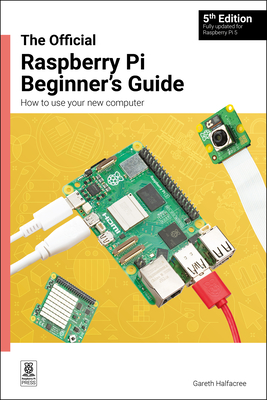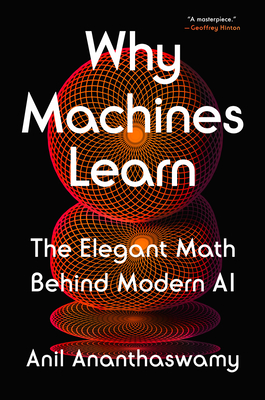Introduction to Spring 5 and JPA2 Training in Albany
|
We offer private customized training for groups of 3 or more attendees.
|
||
Course Description |
||
| This course includes coverage of all the core Spring 5 and JPA 2
capabilities, as well as the integration capabilities provided by
Spring. It provides extensive coverage of using Spring and JPA together,
as well as using Spring Boot for dependency management and creating
JPA-based repositories using Spring Data. All capabilities are practiced
via an extensive set of hands-on labs. Spring 5 provides an
evolutionary advance of Spring's powerful capabilities. The course
introduces these capabilities, as well as providing guidelines on when
and how to use them. It includes coverage of the three main
configuration styles: Java-based (@Configuration), annotation-based
(@Component), and the traditional XML-based configuration that may still
play an important role in existing and new projects. It uses Spring Boot
capabilities for dependency management in many of the labs. The JPA
material covers all basic JPA concepts, including mapping persistent
classes, and using EntityManager and EntityManagerFactory to access and
manipulate persistent entities. Querying with the Java Persistence Query
Language (JPQL) is covered in depth, from basic queries to more advanced
queries like eager queries using left joins. It also includes coverage
of advanced concepts such as collections of value objects,
relationships, and inheritance and polymorphic queries. This course is
hands on with labs to reinforce all the important concepts. It will
enable you to build working Spring/JPA applications and give you an
understanding of the important concepts and technology in a very short time.
Course Length: 5 Days
Course Tuition: $2190 (US) |
||
Prerequisites |
|
| Basic Java | |
Course Outline |
|
Session 1: Introduction to Spring
Overview of Spring Technology
Motivation for Spring, Spring Architecture
The Spring Framework
Spring Introduction
Declaring and Managing Beans
ApplicationContexts - The Spring Container
XML and @Component/@Named Config
Dependencies and Dependency Injection (DI)
Examining Dependencies
Dependency Inversion / Dependency Injection (DI)
DI in Spring - XML and @Autowired
Session 2: Configuration in Depth
Java Based Configuration (@Configuration)
Overview, @Configuration, @Bean
Dependency Injection
Resolving Dependencies
Integrating Configuration Types
XML and @Component Pros/Cons
@Configuration Pros/Cons
Choosing a Configuration Style
Integrating with @Import and <import>
Bean Scope and Lifecycle
Singleton, Prototype, and Other Scopes
Configuring Scope
Bean Lifecycle / Callbacks
Externalizing Properties
Properties Files
@PropertySource, property-placeholder
Using @Value
SpEL
Profiles
Overview and Configuration
Activating Profiles
Session 3: Spring Boot Overview
maven and Spring
Spring Boot Structure
Spring POMs with Boot Parents
Spring Boot Starters
Other Capabilities
Session 4: Spring Testing
Testing and JUnit Overview
Writing Tests - Test Classes, asserts, Naming Conventions
Running Tests - IDE, maven, ...
Test Fixtures - setup and teardown
Spring TestContext Framework
Overview
Configuration
Running Tests
Session 5: Introduction to Java Persistence API (JPA2)
Overview
Persistence Layers, Object-Relational Mapping (ORM), JDBC
JPA Overview
Mapping with JPA
Entities and @Entity, ids and @Id,
Generated Id Values
Basic Mapping Types
Persistence Unit and EntityManager
Persisting to the DB, the EntityManager API
Persistence Units, Config, Persistence Context
Retrieving Persistent Entities with find()
More About Mappings
Default Mappings, @Basic, @Column
Field vs. Property Access
Temporal (Date/Time) Mappings
Java 8 Data/Time Mapping
equals() and hashCode()
Logging Options (Provider based)
Session 6: Spring/JPA Integration
Spring's DataSource Support
Managing the EntityManager (EM)
LocalContainerEntityManagerFactoryBean and Container-managed EMs
JEE and JNDI Lookup of the EM
Configuration and Vendor Adaptors
Creating a JPA Repository/DAO Bean - @PersistenceUnit, @PersistenceContext
Session 7: JPA Updates and Queries
Inserting Updating, and Deleting Entities
Querying and JPQL
Entity Based Queries, SELECT ,WHERE
Query Interface, Executing Queries, Generic Queries (JPA 2)
JPQL Operators, Expressions, and Parameters
Named Queries
Additional Query Capabilities - Projection and Aggregate Query, Embedded Objects
Session 8 Transactions
TX Overview and JPA Transactions
Spring's Declarative TX Management (REQUIRED, etc.)
@Transactional
TX Scope and Propagation
Pointcut-based Configuration of Transactions
Session 9: The JPA Persistence Lifecycle
The Persistence Lifecycle
JPA Entity States (New, Managed, Detached, Removed), and Entity State Diagram
Persistence Context - Lifespan, Propagation
Synchronization to the DB
Versioning and Optimistic Locking
Overview, Detached Instances
Versioning, @Version, Optimistic Locking
Lifecycle Callbacks
@PrePersist, @PostPersist, etc.
Entity Listeners, @EntityListeners
Session 10: Relationships
Relationships Overview: Object Relationships, Participants, Roles, Directionality, Cardinality
Relationship Mapping
Mapping Overview (1-1, 1-N, N-1, N-N)
Unidirectional and Bidirectional
@ManyToOne, @OneToMany, @ManyToMany, @OneToOne with Table Structures
Relationship Inverse - Owning Side
Collection Types (List, Set, etc)
Cascading, Lazy and Eager Loading
Queries Across Relationships (Inner Joins, Outer Joins, Fetch Joins)
Entity Inheritance Mapping
Overview
Single Table, Joined (Table per Subclass), Table per Concrete Class Mappings
Pros and Cons of Mapping Strategies
Session 11: Spring Web Integration
Integrating Spring with Java EE Web Apps
ContextLoaderListener
WebApplicationContext
Using Spring beans in Wep app controller logic
Open EntityManager in View
Lazy Loading Issue in Web Apps
Open EntityManager in View Pattern
Using Spring's OpenEntityManagerInViewFilter/Interceptor
Session 12: Spring Data Introduction
Spring Data Overview
Overview and Architecture
Configuring Spring Data
Repositories and JPA Repositories
Using CrudRepository
Using Spring Data
Naming Conventions for Querying
Creating more Complex Queries
Query Configuration
Session 13: Additional Topics
Spring 5: Core Updates
JPA: Embedded Objects
JPA: Compound Primary Keys
JPA: Element Collections
|
Course Directory [training on all levels]
- .NET Classes
- Agile/Scrum Classes
- AI Classes
- Ajax Classes
- Android and iPhone Programming Classes
- Azure Classes
- Blaze Advisor Classes
- C Programming Classes
- C# Programming Classes
- C++ Programming Classes
- Cisco Classes
- Cloud Classes
- CompTIA Classes
- Crystal Reports Classes
- Data Classes
- Design Patterns Classes
- DevOps Classes
- Foundations of Web Design & Web Authoring Classes
- Git, Jira, Wicket, Gradle, Tableau Classes
- IBM Classes
- Java Programming Classes
- JBoss Administration Classes
- JUnit, TDD, CPTC, Web Penetration Classes
- Linux Unix Classes
- Machine Learning Classes
- Microsoft Classes
- Microsoft Development Classes
- Microsoft SQL Server Classes
- Microsoft Team Foundation Server Classes
- Microsoft Windows Server Classes
- Oracle, MySQL, Cassandra, Hadoop Database Classes
- Perl Programming Classes
- Python Programming Classes
- Ruby Programming Classes
- SAS Classes
- Security Classes
- SharePoint Classes
- SOA Classes
- Tcl, Awk, Bash, Shell Classes
- UML Classes
- VMWare Classes
- Web Development Classes
- Web Services Classes
- Weblogic Administration Classes
- XML Classes
- Introduction to Spring 6, Spring Boot 3, and Spring REST
15 December, 2025 - 19 December, 2025 - See our complete public course listing
Java Programming Uses & Stats
|
Difficulty
|
Popularity
|
Year Created 1995 |
|
Pros
Most Commonly Used:
Great Career Choice:
Android Apps Development:
It Can Run On Any Platform:
Great Supporting IDE's: |
Cons
Uses a Lot of Memory:
Difficulty in Learning:
Slow Start Up Times:
Verbose and Complex Code:
Commercial License Cost: |
| Java Programming Job Market |

Average Salary
|

Job Count
|

Top Job Locations
New York City |
|
Complimentary Skills to have along with Java Programming
- If you are an experienced Java developer, learning a complimentary language to Java should come much more naturally. As an example JetBrains recently created the Kotlin programming language which is officially supported by Google for mobile development. Kotlin compiles to Java bytecode and runs on the JVM; it's purported to address many of Java's shortcomings... |



![iPhone 15 Guide for Seniors: Easy-to-Follow Learning for Older Adults with Step-by-Step Instructions and Visual Aids [II EDITION]](/bookim/9781915331922.jpg)


